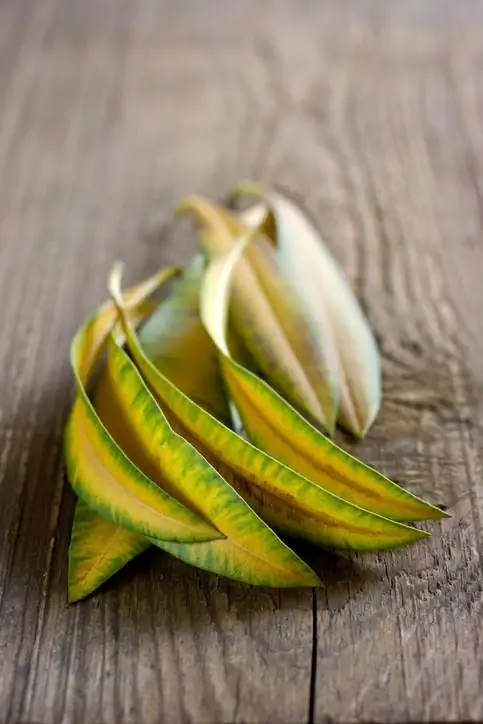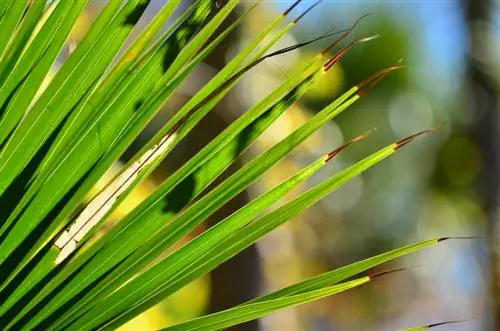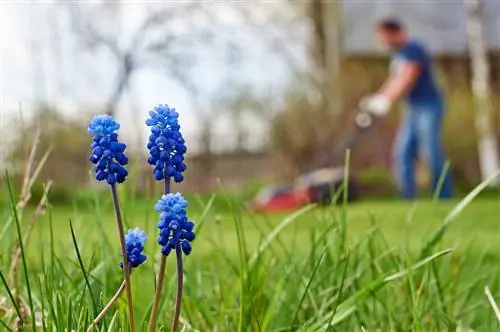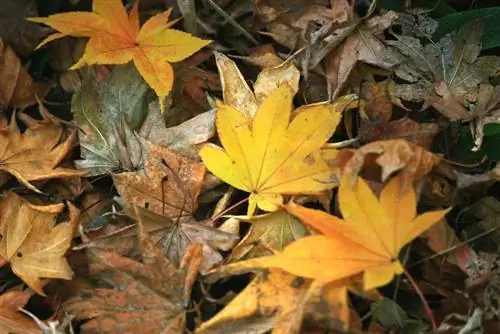- Author admin [email protected].
- Public 2023-12-16 16:46.
- Last modified 2025-01-23 11:20.
As a plant from the Mediterranean, the oleander conjures up a Mediterranean touch in the home garden, but it is not necessarily easy to care for. Especially during the winter, there are a few important tips to keep in mind so that the oleander doesn't get dried leaves after the winter.
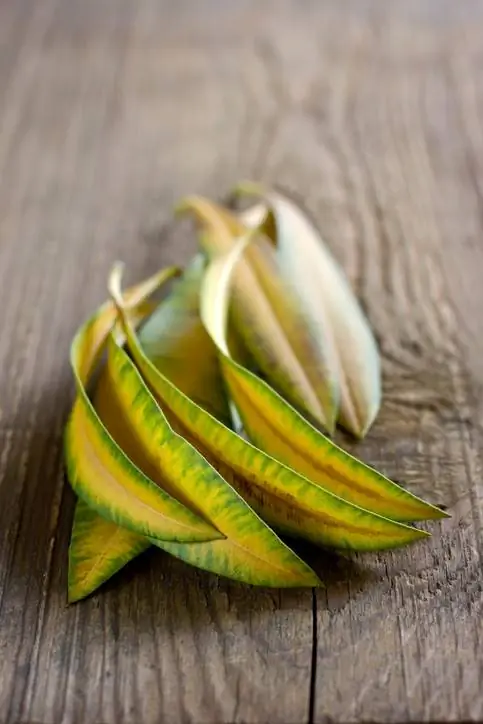
Why does the oleander have dried leaves after winter?
The oleander can develop dried leaves after winter due to frost damage, being removed from the winter quarters too quickly, irregular watering or dry rot. Adapted care during the cold months and gradual acclimatization to the sun help maintain the he alth of the plant.
Dried leaves due to frost damage
If the leaves are green and are firmly attached to the shoots, but at the same time bone dry and crumble easily, then they probably have frost damage. This can also occur if the plants were supposedly made winter-proof - for example, they were wrapped up warm or overwintered in a (not frost-proof) garden shed. With this frost-sensitive plant, one frosty night is often enough for the oleander to freeze. Whether the affected specimen can still be saved depends primarily on the condition of the roots: If they are intact, you can cut the oleander back and it will sprout again. However, if the roots have also suffered frost, the plant can no longer be saved in most cases.
Oleander slowly get used to the sun after clearing it out
If the oleander has dried leaves after the winter, this is not necessarily due to winter damage. A lot of damage is also caused by clearing out the winter quarters too quickly. As a general rule, you should not place the oleander in the sun straight from its darker winter storage. Instead, the shrub initially belongs in the shade for a few hours at a time. The outside hours and the sunshine hours are only slowly extended.
Water oleander regularly even in winter
Another common mistake when overwintering the oleander is that watering is forgotten or done too rarely. Although oleander needs significantly less water in the cold season than during the growing season, it should still be watered about once a week.
Dry rot often occurs after winter
Dried leaves, inflorescences and shoots after the winter break are also often a sign of so-called dry rot (Ascochyta), a fungal disease typical of oleanders. This usually occurs during or after overwintering and attacks the above-ground parts of the shrub and then gradually migrates towards the roots. This disease can only be counteracted with preventive injections.
Tip
Plants that have been overwintered in cold temperatures can generally be removed from their winter quarters earlier than those that have been overwintered warmer. The former have hardened to a certain extent over the cold season and are therefore more robust.

